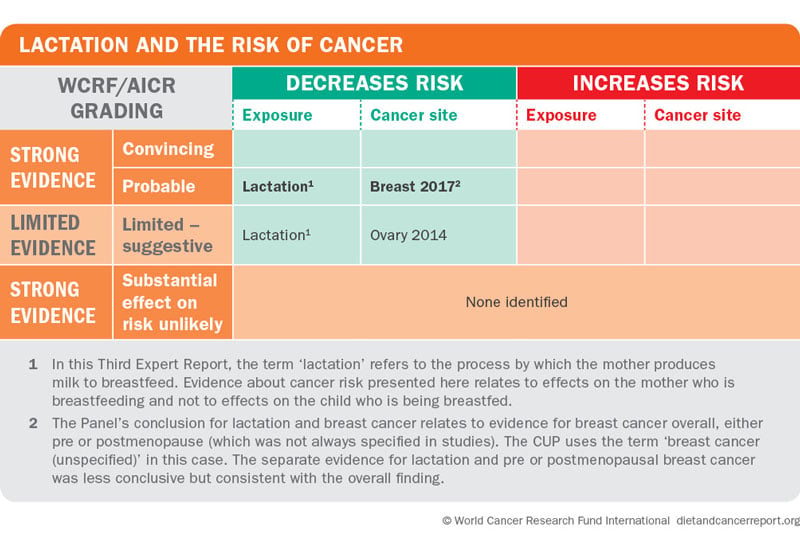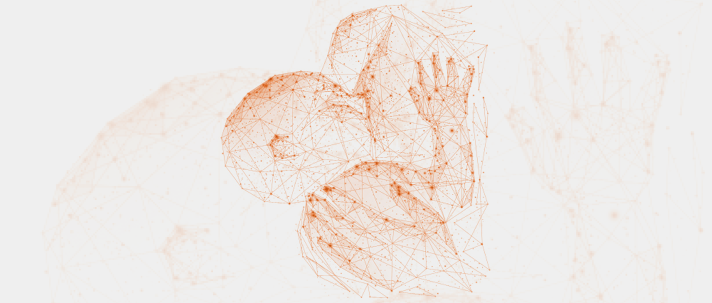Breastfeeding
Breastmilk provides a complete source of nourishment for newborns and young infants. The World Health Organization (WHO) recommends that babies should be exclusively breastfed (receive only breastmilk) for the first six months of life for the health of both mother and child, and that breastfeeding should continue for up to two years or beyond, alongside other appropriate foods and drinks.
Cancer Prevention Recommendation
The advice for mothers is to breastfeed your baby, if you can.
A 2016 review of breastfeeding patterns around the world suggests that most mothers, regardless of income group, breastfeed their babies at some point after birth.
However, even in low-income countries, where breastfeeding rates tend to be higher than in high-income countries, only 47 per cent of infants are exclusively breastfed for the first six months of life. The global average is 36 per cent.
In Diet, Nutrition, Physical Activity and Cancer: a Global Perspective (the Third Expert Report), the term ‘lactation’ refers to the process by which the mother produces milk to breastfeed, whether directly or through expressing or pumping breastmilk. All the evidence about cancer risk presented in this part of the Third Expert Report relates to effects on the mother who is breastfeeding and not to effects on the child who is being breastfed.
OUR MAJOR FINDINGS ON LACTATION AND CANCER
There is strong evidence that:
- breastfeeding DECREASES the risk of breast cancer in the mother

> See more graphics in our toolkit
The evidence shows that, in general, the greater the number of months that women continue breastfeeding their babies, the greater the protection these women have against breast cancer.
– This is the opinion of the Expert Panel and forms the basis of our Recommendation on breastfeeding
There is also other evidence that is limited (either in amount or by methodological flaws) but is suggestive of a decreased risk of ovarian cancer in women who breastfeed. Further research is required, and the Panel has not used this evidence to make recommendations.
Mechanisms
Lactation and breast cancer
The principal mechanism through which lactation or breastfeeding could plausibly influence breast cancer risk is through the hormonal influence of the associated period of amenorrhea and infertility. This decreases lifetime exposure to menstrual cycles and therefore alters cumulative exposures to specific hormones, particularly androgens, which can influence cancer risk.
Increased levels of sex steroids are strongly associated with risk of postmenopausal breast cancer. In addition, the sustained exfoliation of breast tissue during lactation and the pronounced epithelial apoptosis at the end of lactation could decrease breast cancer risk through the elimination of cells with DNA damage and mutations.
Lactation and ovarian cancer
The mechanisms underlying a lower risk of ovarian cancer among women who have breastfed are not well elucidated. One prevailing hypothesis is that breastfeeding is associated with longer periods of amenorrhea and therefore longer suppression of ovulation and decrease in gonadotropin levels and thus lower lifetime exposure to plasma oestradiol.
> Read more about the cancer process

